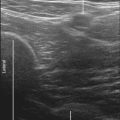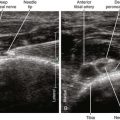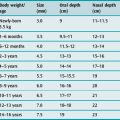Introduction
The pharmaceutical industry plays a critical role in global health by producing and distributing life-saving medications. However, the rise of substandard or falsified drugs poses a significant threat to public health. Despite the efforts of global regulatory bodies, vulnerabilities in the pharmaceutical supply chain persist, compromising patient safety and undermining the integrity of the healthcare system.
Challenges in the Pharmaceutical Supply Chain
The complexity of the pharmaceutical supply chain, from raw material sourcing to distribution, creates ample opportunities for substandard or falsified drugs to enter the market. Regulatory bodies are tasked with overseeing this intricate network, but their effectiveness is hindered by several challenges.
Globalization and Fragmentation
- The globalization of pharmaceutical manufacturing has led to a fragmented supply chain that spans multiple countries. Regulatory bodies struggle to harmonize standards and coordinate efforts, allowing loopholes for substandard or falsified drugs to enter markets.
According to the World Health Organization (WHO), the globalized nature of the pharmaceutical supply chain complicates regulatory oversight, making it challenging to ensure the quality of medicines across borders.
Limited Resources and Capacity
- Many regulatory bodies face resource constraints, hindering their ability to conduct thorough inspections and enforce stringent regulations. Insufficient funding, personnel, and technology limit their capacity to monitor the entire supply chain effectively.
A report by the International Pharmaceutical Regulators Forum (IPRF) highlighted the resource constraints faced by regulatory agencies worldwide, impacting their ability to combat substandard or falsified drugs.
Counterfeiting Technologies Advancements
- As technology evolves, so do the methods used by criminals to counterfeit drugs. From sophisticated packaging to advanced replication techniques, counterfeiters continuously outpace regulatory efforts, making it difficult for authorities to identify and mitigate emerging threats.
The Pharmaceutical Security Institute (PSI) reports an increase in counterfeiting activities, emphasizing the need for regulatory bodies to adapt quickly to technological advancements.
Regulatory Failures and Shortcomings
Despite the recognized challenges, there are instances where regulatory bodies have failed to address vulnerabilities adequately, leading to severe consequences for public health.
Inadequate Inspection and Enforcement
- Regulatory bodies are responsible for inspecting manufacturing facilities to ensure compliance with quality standards. However, instances of inadequate inspections and enforcement have been reported, allowing substandard or falsified drugs to enter the market.
A study published in the British Journal of Clinical Pharmacology highlighted gaps in the inspection and enforcement practices of regulatory authorities, emphasizing the need for a more robust approach.
Lack of International Collaboration
- Collaboration among regulatory bodies is crucial to addressing global challenges in the pharmaceutical supply chain. Unfortunately, limited collaboration and information-sharing hinder the timely identification and mitigation of risks.
A joint report by the World Trade Organization (WTO) and the WHO identified gaps in international collaboration, stressing the need for improved coordination among regulatory agencies.
Slow Response to Emerging Threats
- The dynamic nature of the pharmaceutical market requires regulatory bodies to respond swiftly to emerging threats. Delays in recognizing and responding to new risks can have severe consequences for patient safety.
The International Coalition of Medicines Regulatory Authorities (ICMRA) acknowledges the need for a more proactive approach to identify and address emerging threats in the pharmaceutical supply chain.
The ARTiFACTS Verify platform offers an integrated approach to identifying substandard and falsified drugs that have entered the pharmaceutical supply chain:
- Identification of suspect medicines through on-site testing at any point in the supply chain using paper analytical device technology that is cost-effective and requires minimal training.
- Confirmation of the properties of medicines failing the initial test through further testing at specialist labs, using advanced scientifically recognized techniques, including high-performance liquid chromatography, mass spectroscopy, among others.
- Organisation of all data captured for managing workflows, analysing and reporting results.an immutable record of test results, including active pharmaceutical ingredients,
- Coverage of over half of WHO’s 600 Essential Medicines.
- Enhanced data security by recording results on a purpose-built blockchain provides product origin, manufacturer and other data essential for effective intervention.
Conclusion
The vulnerabilities in the pharmaceutical supply chain persist, and the failures of global regulatory bodies contribute to the ongoing challenges of combating substandard or falsified drugs. Addressing these issues requires a concerted effort to enhance international collaboration, allocate sufficient resources, and adopt innovative technologies to stay ahead of counterfeiters. Strengthening the regulatory framework and ensuring effective enforcement are essential steps in safeguarding global public health from the threats posed by substandard or falsified drugs.







